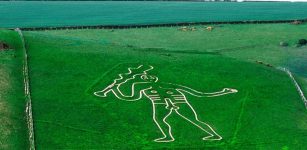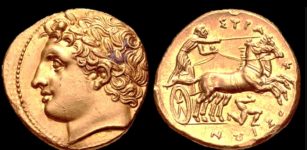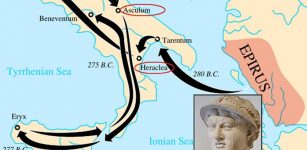Has The Burial Place Of Mysterious Dark Age King Cerdic Of Wessex Been Located?
Jan Bartek - AncientPages.com - For more than 1,000 years, historians and archaeologists have tried to locate King Cerdic of Wessex's burial place in vain. The discovery of a burial mound may illuminate this historical mystery.
King Cerdic was an intriguing historical figure who played a major role in shaping the early foundations of what would eventually become the nation of England. With the exception of the legendary King Arthur, no other figure from the early medieval period achieved such enduring fame and recognition.
Cerdic of Wessex from John Speed's Saxon Heptarchy map. Credit: Public Domain
According to ancient Anglo-Saxon chronicles, Cerdic is recognized as the first king of Wessex. These historical records indicate that Cerdic invaded England around 500 AD and subsequently established the kingdom of Wessex, which would later become a prominent and influential realm in the region.
Paul Harper, an author who researched a Dark Age king for his book, believes that the outskirts of Andover could potentially be the burial site of this mysterious ruler. He traced the location by studying an ancient royal charter that mentions 'Ceardices Beorg'—the Old English term for 'Cerdic's Barrow'.
This charter, dated to 900 AD, was issued by Edward the Elder, the son of the renowned Alfred the Great, who was the king of the Anglo-Saxons in the late ninth century. In this document, Edward granted 10 hides (approximately 11,000 acres) of land to Winchester Cathedral, an area that now largely encompasses the St Mary Bourne parish in Hampshire.
The charter referenced various landmarks, including Cerdic's Barrow. Inspired by the research of academic George Grundy, Harper's investigation led him to discover a burial mound in the location indicated as Cerdic's Barrow. This site has been identified and recorded in Hampshire County Council's historic environment records.
The tumulus, or ancient burial mound, has changed significantly over time. Despite its current flattened and ploughed-over state, aerial photography from the 1960s and 1970s revealed traces of a massive barrow measuring an impressive 72 feet in diameter. According to Harper's assessment, this barrow could have stood as tall as 12 feet, making it a spectacular and imposing feature within the surrounding landscape. The sheer scale of this ancient structure highlights its significance and the remarkable engineering capabilities of the people who constructed it.
Cerdic of Wessex from the 2004 movie "King Arthur". Credit: Guardian Unlimited. Fair Use
According to historical documents, Cerdic's Barrow was strategically situated on a hill near an ancient trackway called the Harrow Way, which connected Kent and Devon. It was located close to a massive ditch resembling Offa's Dyke, potentially extending to the Wiltshire border in Chute parish, approximately eight miles away.
See also: More Archaeology News
Historian Harper suggests that the placement of Cerdic's Barrow at this site was no coincidence. It served as a public display of power near ancient roads and a warning to his enemies in modern-day Wiltshire, represented by the imposing burial mound. Cerdic was one of several warlords vying for territory in post-Roman Britain, and his final resting place was deliberately chosen with his rivals and enemies in mind. The message was clear: the land belonged to the Cerdicing dynasty, and trespassers would enter at their own peril.
With permission from the landowners, Mr. Harper hopes to conduct an archaeological geophysical survey of the site in the future.
Written by Jan Bartek - AncientPages.com Staff Writer
Expand for references





















